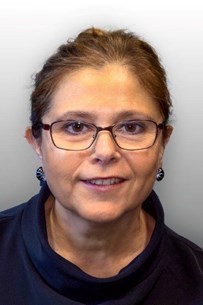Meeting
2012 Gastrointestinal Cancers Symposium

Cancer Council NSW, Sydney, Australia
Monica Cristina Robotin , Yumi Patton , Melanie Q Kansil , Jacob George , Andrew G Penman
Background: Hepatitis B (HBV) infection is endemic in many Asian and Pacific Island countries, with 25-40% of chronic hepatitis B (CHB) patients developing cirrhosis or hepatocellular cancer (HCC). Increased migration from high HBV prevalence countries leads to Vietnamese-born Americans and Australians 11-13 times more likely to develop HCC than other groups. As antiviral therapy is more cost-effective than HCC screening, we developed a program of hepatitis B screening, monitoring and treatment targeting high–risk populations in Sydney aged >35 years (the median age for HBeAg sero-conversion in Asian populations). Here we compare estimated program costs using guidelines for HBV treatment in hepatitis B e antigen negative populations. Methods: Using a Markov model, we modelled CHB disease progression and management costs using guidelines published by the American, European and Asian Pacific Associations for the Study of Liver Disease (AASLD, EASL and APASL) and algorithms created by US hepatology experts and our B Positive program, using different levels of alanine aminotransferase (ALT) for treatment initiation. We factored in costs for CHB screening and surveillance for liver damage provided by specialists and/or primary care providers, including CHB and HCC treatment, individualised by viral load and ALT levels. Costs were discounted by 5% and calculated in Australian dollars (AUD); incremental costs used AASLD guidelines as a baseline. Results: Assuming a 25% enrolment in our target population of patients with CHB in South West Sydney followed up for 50 years, total program costs would amount to 9,205,680 AUD. Using AASLD guidelines, estimated cost would amount to 6,344 AUD per patient. APASL guidelines lead to a 132% cost rise, the B Positive program costs 152% more, while the US algorithm and EASL are associated with a 221% cost increment to achieve the equivalent cost/QALY. Conclusions: While the AASLD guidelines appear to be the least costly, uncertainties about “ideal” ALT and viral load levels for treatment initiation and the extent of the benefit conferred in terms of HCC cases averted will need to be resolved to inform large-scale prevention programs.
Disclaimer
This material on this page is ©2024 American Society of Clinical Oncology, all rights reserved. Licensing available upon request. For more information, please contact licensing@asco.org
2012 Gastrointestinal Cancers Symposium
Poster Session
General Poster Session B: Cancers of the Pancreas, Small Bowel, and Hepatobiliary Tract
Cancers of the Pancreas, Small Bowel, and Hepatobiliary Tract
Prevention, Diagnosis, and Screening
J Clin Oncol 30, 2012 (suppl 4; abstr 193)
10.1200/jco.2012.30.4_suppl.193
193
A45
Abstract Disclosures
2024 ASCO Quality Care Symposium
First Author: Vedaamrutha Reddy
2024 ASCO Annual Meeting
First Author: Adham Obeidat
2024 ASCO Gastrointestinal Cancers Symposium
First Author: Moses Andrew Alfaro
2022 ASCO Annual Meeting
First Author: Jeremy Chang